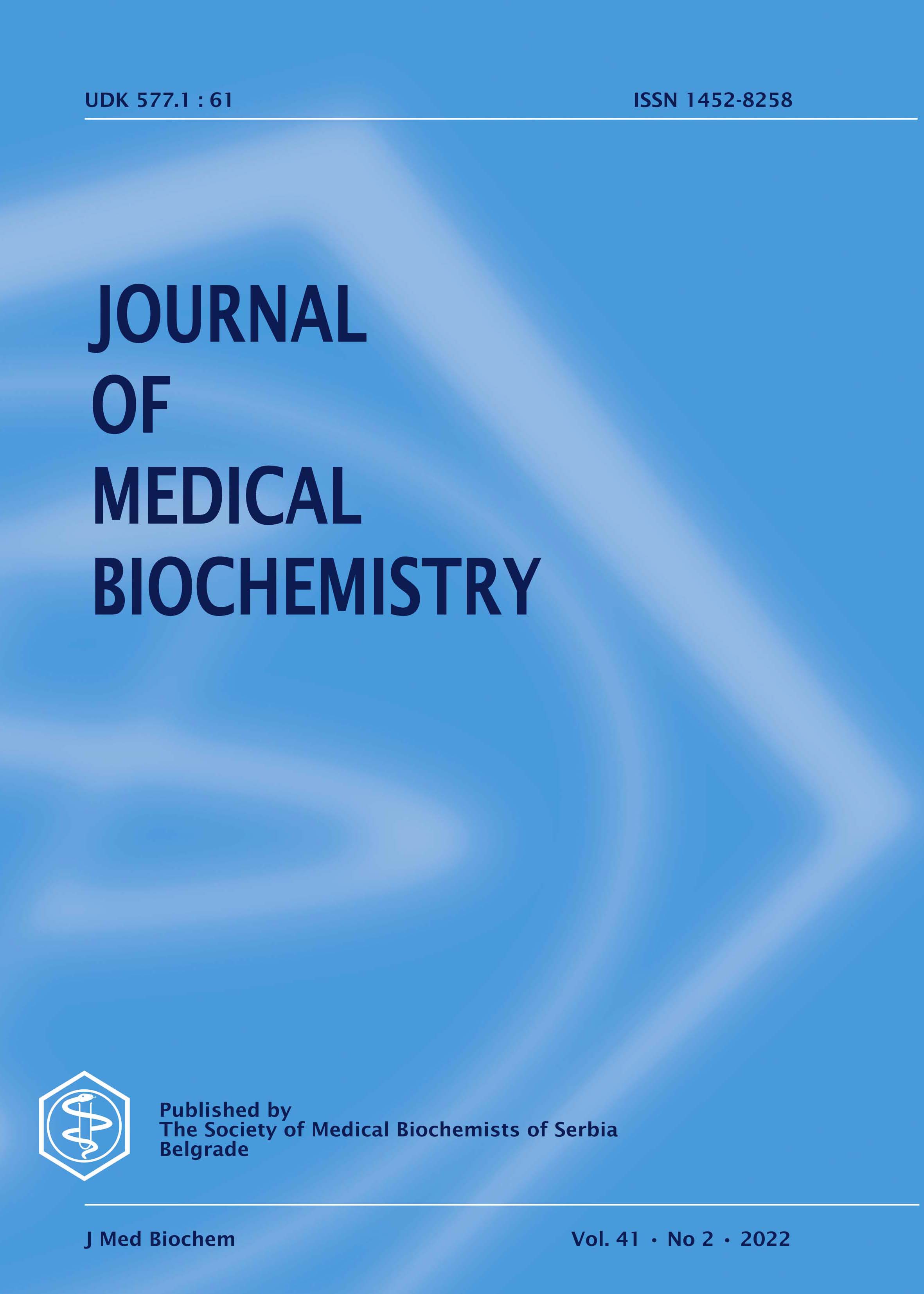N/A
Anti-SARS-CoV-2 antibodies in healthcare workers
Sažetak
Background: This study aimed at monitoring the kinetics of serum total anti-SARS-CoV-2 (severe acute respiratory syndrome coronavirus 2) antibodies in a cohort of healthcare workers after voluntary vaccination with Pfizer-BioNTech coronavirus disease 2019 (COVID-19).
Methods: The study population consisted of 787 healthcare workers (mean age 44±12 years; 66% females), who received two 30 μg doses of Pfizer-BioNTech COVID-19 vaccine, 3 weeks apart. Venous blood was drawn before the first vaccine dose, immediately before the second vaccine dose, and then at 1, 3 and 6 months after the second vaccine dose. Serological testing employed the total anti-SARS-CoV-2 antibodies measurement with Roche Elecsys Anti-SARS-CoV-2 S chemiluminescent immunoassay.
Results: The median serum levels of total anti-SARS-CoV-2 antibodies reached the peak (1762 KU/L) 1 month after the second vaccine dose, but tended to progressively decline at the 3-month (1086 KU/L) and 6-month (802 KU/L) follow-up points. Overall, the values after 3- and 6-months were 37% and 57% lower than the corresponding concentrations measured at the peak. No healthcare worker had total anti-SARS-CoV-2 antibodies below the method-dependent cut-off. The decline compared to the peak was more accentuated in baseline seropositive persons than in those who were baseline seronegative (74% vs. 52%) cohort. The 6-month post-vaccination anti-SARS-CoV-2 antibodies in subjects aged <65 years remained over 2-fold higher than that measured in those aged ≥65 years (813 vs. 343 KU/L).
Conclusions: Gradual decline of total anti-SARS-CoV-2 antibodies occurred 6 months after Pfizer-BioNTech COVID-19 vaccination, though values remained higher than the method-dependent cut-off, with no case of seronegativization.
Reference
2. Yoshimura Y, Sasaki H, Miyata N, Miyazaki K, Tachikawa N. Antibody response after COVID-19 vaccine BNT162b2 on health care workers in Japan. J Infect Chemother. 2021 Aug 12:S1341-321X(21)00220-8. doi: 10.1016/j.jiac.2021.08.008. Epub ahead of print.
3. Salvagno GL, Henry BM, Lippi G. The strength of association between pre- and post-booster BNT162b2 anti-SARS-CoV-2 antibodies levels depends on the immunoassay. Int J Infect Dis. 2021 Aug 26:S1201-9712(21)00693-7. doi: 10.1016/j.ijid.2021.08.059. Epub ahead of print.
4. Lippi G, Henry BM, Plebani M. Anti-SARS-CoV-2 Antibodies Testing in Recipients of COVID-19 Vaccination: Why, When, and How? Diagnostics (Basel) 2021;11:941.
5. Douxfils J, Gillot C, Mullier F, Favresse J. Post-SARS-CoV-2 vaccination specific antibody decrease - Thresholds for determining seroprevalence and seroneutralization differ. J Infect. 2021 Aug 15:S0163-4453(21)00405-9. doi: 10.1016/j.jinf.2021.08.023. Epub ahead of print.
6. Bayart JL, Douxfils J, Gillot C, David C, Mullier F, Elsen M, et al. Waning of IgG, total and neutralizing antibodies 6 months post-vaccination with BNT162b2 in healthcare workers. Res Sq 2021. Doi: 10.21203/rs.3.rs-862966/v1.
7. Tré-Hardy M, Cupaiolo R, Wilmet A, Antoine-Moussiaux T, Vecchia AD, et al. Six-month interim analysis of ongoing immunogenicity surveillance of the mRNA-1273 vaccine in healthcare workers: A third dose is expected. J Infect. 2021 Aug 23:S0163-4453(21)00433-3. doi: 10.1016/j.jinf.2021.08.031. Epub ahead of print.
8. Lippi G, Sanchis-Gomar F, Henry BM. COVID-19: unravelling the clinical progression of nature's virtually perfect biological weapon. Ann Transl Med 2020;8:693.
Sva prava zadržana (c) 2021 Giuseppe Lippi, Gian Luca Salvagno, Brandon Michael Henry, Laura Pighi, Simone De Nitto

Ovaj rad je pod Creative Commons Autorstvo 4.0 međunarodnom licencom.
The published articles will be distributed under the Creative Commons Attribution 4.0 International License (CC BY). It is allowed to copy and redistribute the material in any medium or format, and remix, transform, and build upon it for any purpose, even commercially, as long as appropriate credit is given to the original author(s), a link to the license is provided and it is indicated if changes were made. Users are required to provide full bibliographic description of the original publication (authors, article title, journal title, volume, issue, pages), as well as its DOI code. In electronic publishing, users are also required to link the content with both the original article published in Journal of Medical Biochemistry and the licence used.
Authors are able to enter into separate, additional contractual arrangements for the non-exclusive distribution of the journal's published version of the work (e.g., post it to an institutional repository or publish it in a book), with an acknowledgement of its initial publication in this journal.

